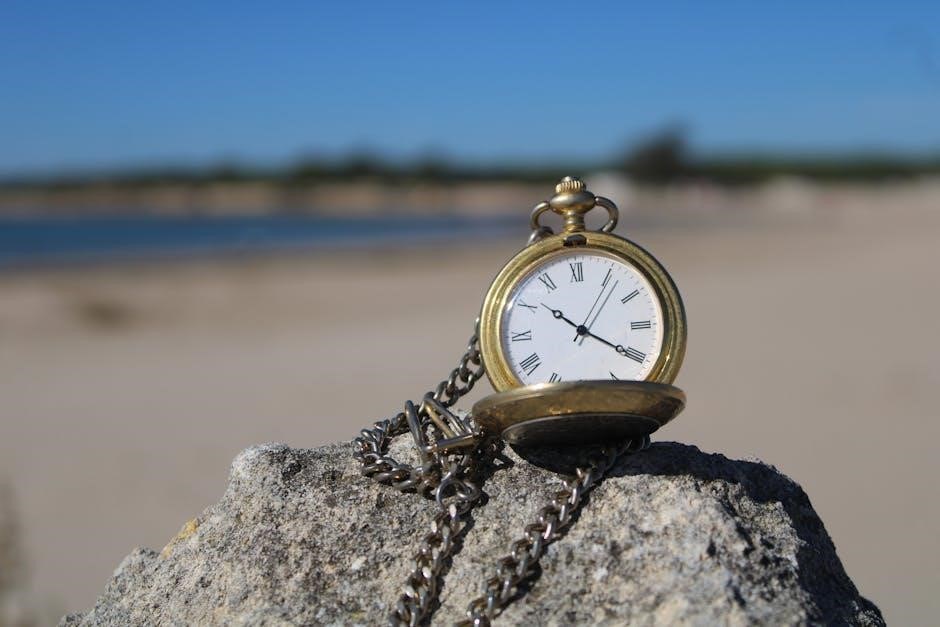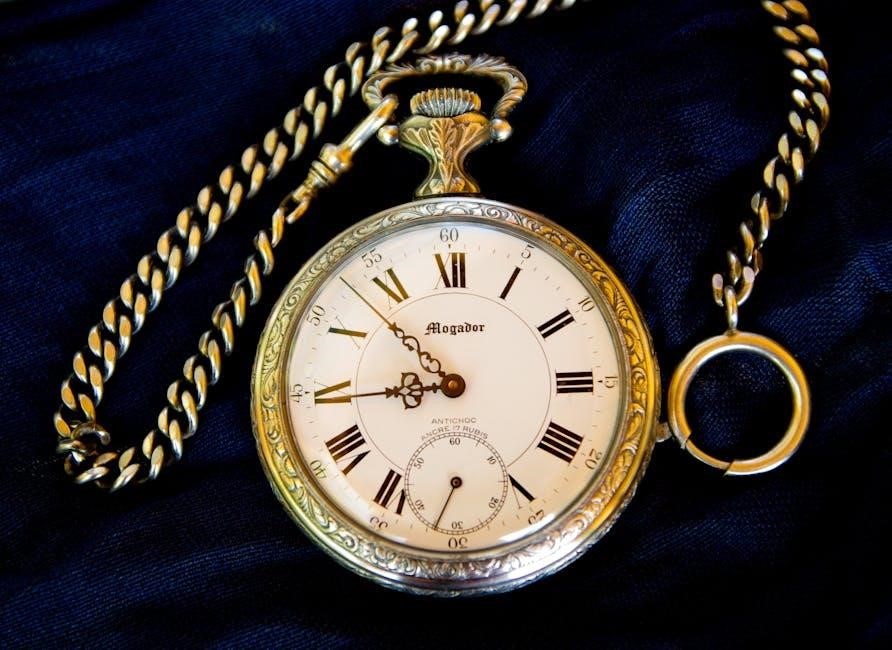The timing chain guide is a critical engine component that ensures proper synchronization between the crankshaft and camshaft. It helps maintain the chain’s alignment, preventing wear and misalignment, while reducing interference with nearby engine parts. Regular inspection and maintenance of these guides are essential for optimal engine performance and longevity.

1.1 What Are Timing Chain Guides?
Timing chain guides are components designed to keep the timing chain aligned and secure within the engine. They are typically made of durable materials, such as plastic or metal, and are crucial for maintaining proper engine synchronization. These guides prevent the chain from slipping or misaligning, which could cause engine damage. They work in conjunction with tensioners to keep the timing chain taut and properly positioned, ensuring consistent engine operation.

1.2 The Role of Timing Chain Guides in Engine Operation
Timing chain guides play a vital role in ensuring smooth engine operation by maintaining the alignment and tension of the timing chain. They prevent the chain from slipping or misaligning, which could disrupt the synchronization between the crankshaft and camshaft. By keeping the chain on its intended path, guides minimize wear and tear on both the chain and adjacent components. This ensures consistent engine timing, optimal performance, and reduces the risk of mechanical failure. Properly functioning guides are essential for reliable engine operation and longevity.

Components of the Timing Chain System
The timing chain system includes the chain itself, tensioners, and guides. These components work together to maintain proper engine timing and prevent mechanical failure.

2.1 The Timing Chain Itself
The timing chain is a durable, engineered component made from high-strength materials like steel or composite. It connects the crankshaft to the camshaft, synchronizing piston and valve movements. Lubrication is essential for its longevity, as it operates under high stress. Over time, wear can lead to stretching or damage, potentially causing engine misalignment or failure. Regular inspection and replacement are crucial to prevent catastrophic damage. A well-maintained timing chain ensures smooth engine operation and optimal performance.
2.2 Tensioners and Their Function
Tensioners are essential for maintaining the timing chain’s proper tension, preventing excessive slack or tightness. Hydraulic or mechanical designs automatically adjust chain tautness, ensuring smooth engine operation. Over time, tensioners can wear out, leading to chain misalignment or noise. Regular inspection is crucial, as failed tensioners can cause complete chain failure. Proper lubrication and oil quality significantly impact tensioner longevity. Replacing worn tensioners during timing chain service is highly recommended to avoid costly engine damage.
2.3 Upper and Lower Guides
Upper and lower guides are critical components that direct the timing chain, ensuring it stays aligned and avoids contact with other engine parts. Typically made of durable materials like plastic or metal, these guides prevent excessive wear and potential chain misalignment. Over time, they can wear out due to constant friction and stress, especially if the engine is low on oil or poorly maintained. Replacing worn guides during timing chain service is essential to maintain proper engine function and prevent costly damage.
Common Issues with Timing Chain Guides
Timing chain guides often face wear and tear due to constant friction and stress. Poor maintenance, low oil levels, and improper chain tension can accelerate their degradation, leading to engine issues.
3.1 Wear and Tear on Guides and Tensioners
Wear and tear on timing chain guides and tensioners is common due to continuous engine operation. Over time, the guides may develop cracks or become brittle, while tensioners can lose their ability to maintain proper chain tension. This wear is often exacerbated by insufficient oil quality or inadequate maintenance, leading to increased friction and stress on these components. If left unchecked, such wear can result in premature failure of the timing chain system, potentially causing costly engine damage. Regular inspections are crucial to identify and address these issues early.
3.2 Symptoms of Failing Timing Chain Guides
Common symptoms of failing timing chain guides include a rattling or clunking noise from the engine, particularly during acceleration or deceleration. The chain may slip, causing misfires and reduced engine performance. In severe cases, the engine may stall or fail to start. Additionally, the check engine light may illuminate, indicating timing-related errors. These symptoms often worsen over time and can lead to complete engine failure if not addressed promptly. Early detection is key to preventing costly repairs.

3.3 Consequences of Ignoring Timing Chain Issues
Ignoring timing chain issues can lead to severe engine damage, including complete engine failure. A failed chain or guide can cause misfires, poor performance, and even render the vehicle inoperable. Neglecting worn or damaged components often results in costly repairs, such as replacing the entire timing chain system, water pump, and potentially other adjacent parts. Prompt attention is crucial to avoid these consequences and ensure long-term engine reliability and performance.

Replacing Timing Chain Guides
Replacing timing chain guides involves removing the old, worn components and installing new ones. This process typically includes replacing the chain, tensioners, and water pump for optimal performance. Proper tools and a clean workspace are essential for a successful replacement.
4.1 Tools and Materials Needed
To replace timing chain guides, you’ll need a timing chain kit, torque wrench, socket set, and screwdrivers. Additional materials include new guides, tensioners, and a water pump. Ensure you have a service manual for specific instructions and torque specifications. A clean workspace and oil drain pan are also essential. Replace any worn components like the chain or sprockets for optimal performance. Always verify compatibility of parts with your engine type before installation.
4.2 Step-by-Step Replacement Process

Start by disconnecting the battery and draining the cooling system. Remove the serpentine belt and any components blocking access to the timing chain. Use a wrench to loosen the tensioner, then remove the old guides and chain. Install the new guides, ensuring proper alignment and tension. Reassemble in the reverse order, tightening bolts to the specified torque. Replace the water pump if necessary and refill the cooling system. Finally, reconnect the battery and test the engine for proper operation.
4.3 Tips for Proper Installation
Ensure the timing chain and guides are properly aligned before tightening any bolts. Use a torque wrench to secure components to the manufacturer’s specifications. Inspect all parts for wear or damage before installation. Lubricate moving parts with engine oil to prevent premature wear. Double-check the chain tension and guide placement to avoid misalignment. After installation, start the engine and listen for unusual noises, which could indicate improper installation. Always refer to the service manual for specific instructions tailored to your engine type.
Maintenance and Best Practices
Regular inspection of timing chain guides and tensioners is essential to prevent wear. Use high-quality oil to lubricate components and follow manufacturer guidelines for optimal performance and longevity.
5.1 Regular Inspection of Timing Chain Components
Regular inspections of timing chain components are crucial for early detection of wear and damage. Check guides, tensioners, and the chain itself for signs of wear or misalignment. Look for unusual noises, such as rattling or clunking, which may indicate issues. Inspect the chain for stretching or rust and ensure all guides are securely in place. Use a mechanic’s stethoscope to listen for abnormal sounds from the timing chain area during engine operation. Addressing these issues promptly can prevent costly repairs and ensure engine longevity. Always refer to the service manual for specific inspection intervals and procedures. Regular maintenance not only extends the life of the timing chain system but also improves overall engine performance and reliability.
5.2 Oil Quality and Its Impact on Timing Chain Longevity
Oil quality plays a significant role in maintaining the health of timing chain components. Using the correct viscosity and type of oil ensures proper lubrication, reducing friction and wear on guides and tensioners. Poor oil quality or insufficient oil changes can lead to premature wear, rust, and corrosion of metal parts. Synthetic oils are often recommended for their superior lubrication properties, especially in high-temperature conditions. Regular oil changes and using the manufacturer-recommended oil grade can significantly extend the lifespan of the timing chain system and prevent costly repairs. Always prioritize oil maintenance for optimal engine performance.
5.3 Preventative Measures to Avoid Premature Wear
Regular inspections and prompt replacement of worn components are crucial to prevent premature wear of timing chain guides. Ensuring proper installation, aligning components accurately, and following torque specifications help maintain system integrity. Adhering to the manufacturer’s recommended service intervals for chain replacements and tensioner checks is essential. Using high-quality parts and ensuring proper oil circulation also play a key role in extending the lifespan of timing chain guides. These proactive measures help avoid costly repairs and ensure smooth engine operation over time.
The timing chain guide is vital for engine synchronization, with regular inspections and quality replacements ensuring longevity. Summit Racing and forums offer trusted resources for further guidance and parts.

6.1 Summary of Key Points
The timing chain guide plays a critical role in maintaining engine synchronization by keeping the chain aligned and reducing wear. Regular inspections are essential to identify worn components, such as tensioners and guides, which can cause chain failure. Replacing these parts requires specific tools and careful steps to ensure proper installation. Using high-quality components and following maintenance practices, like checking oil quality, helps prevent premature wear. Resources such as Summit Racing and repair forums provide valuable guidance for repairs and upgrades. Addressing issues early is vital to avoid engine damage and ensure long-term performance.
6.2 Recommended Reading and Further Resources
For further understanding, consult repair manuals or forums like Summit Racing, which offer detailed guides on timing chain systems. Resources such as the LS2 timing chain kit guide provide insights into upgrading components. Additionally, manufacturer-specific forums and technical bulletins can offer tailored advice for your vehicle. Always refer to trusted sources to ensure accurate and safe repairs. These resources will help you make informed decisions and perform effective maintenance or replacements.
